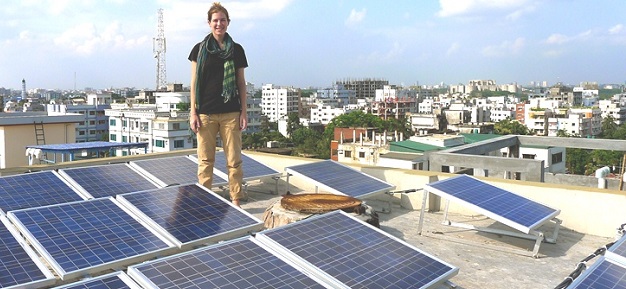Renewable Energy: Renewed Economic Hope for Bangladesh?

Bangladesh’s recent advance in solar panel installations has led to it becoming one of the world’s leading countries in renewable energy jobs.
Background
Globally, the People’s Republic of Bangladesh is best known in two distinct areas: as devoted cricket contenders and a global hub for manufacturing (which has sparked human rights breaches for workers). The country, formerly known as East Pakistan, is, however, now starting to make a mark on the global map with a whole new initiative: a green workforce. This initiative is by no means a drop in the ocean in comparison to the rest of the world; it has produced a green workforce that competes well with similar workforces in other countries. In fact, Bangladesh is creating a green workforce as large as that of Spain.
Comment
Solar Energy has been the driving force behind the growth of Bangladesh’s green workforce. It is installing around eighty-thousand small photovoltaic systems a month. In a country in which only 47 per cent of the population has access to electricity (according to the Asian Development Bank), solar power is seen as the new way to build a large power grid. In the past ten years, the number of solar systems in Bangladesh has increased from 25,000 to 2.8 million. This has created around 114,000 jobs ranging from assembling solar panels to selling, installing and maintaining them. In fact, the number of solar-related jobs doubled between 2011 and 2013. This boost in employment has undoubtedly helped to keep Bangladesh’s unemployment rate of 4.5 per cent from increasing. At the global level, solar energy has accounted for 2.3 million of the world’s 6.5 million renewable energy related jobs.
According to theDaily Star, Bangladesh has the sixth-largest energy related workforce in the world. This aligns with the findings of a recently-concluded report on the region, which said there is a ‘regional shift from developed to emerging countries continued in wind and solar technologies, predominantly in the manufacturing and installation segments of the value chain’.
The question remains, though, as to why the country would want to move ahead so rapidly with its plan to develop its solar energy infrastructure. Some analysts see it as an attempt by Bangladesh to rebrand itself, after the controversial garment factory disaster in which hundreds lost their lives and amid the other reported catastrophes involving factory workers. On the other hand, however, it could be an aspirational government developmental goal. A surging population, which saw the country grow by 20 million people in the last ten years, is placing high demands on the electricity infrastructure, rendering it unreliable. Consequently, this has led people to invest in their own electricity-generating equipment, and solar panels have become the popular choice. This has happened although only sixty-two per cent of the population had access to the power grid as of September 2013.
By way of comparison, China is the largest employer in the renewable energy sector, with 2.6 million people employed. This workforce grew after the installation of infrastructure capable of generating 14 gigawatts of photovoltaic power. Brazil is the second-largest, with 894,000 people in renewable energy jobs. In third place is the United States, with 625,000 renewable energy jobs, followed by India with 400,000. While Bangladesh still has some way to go when compared to these countries, it has made a good start, regardless of the motivations behind it
Adil Cader is a Research Assistant at the Indian Ocean Research Programme at Future Directions International.
This article was originally published by Future Directions International. It is republished with permission.


